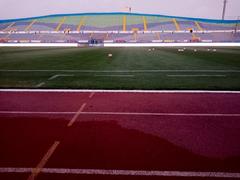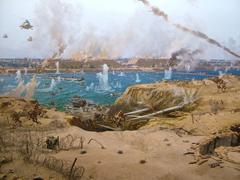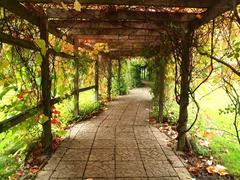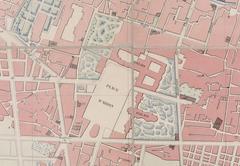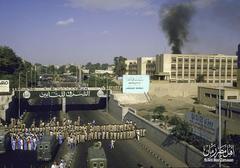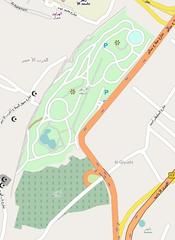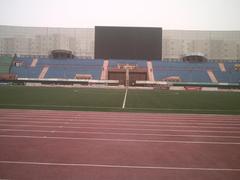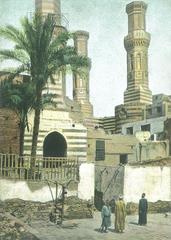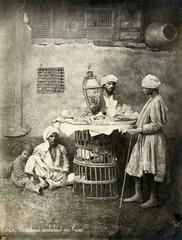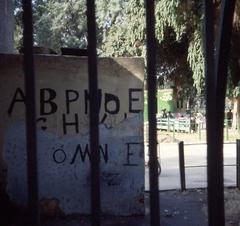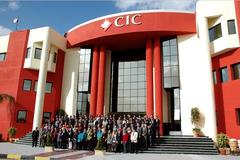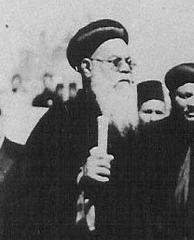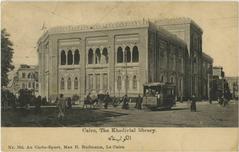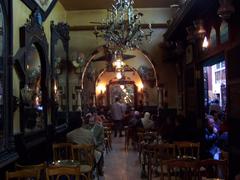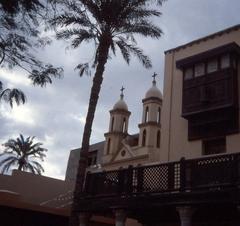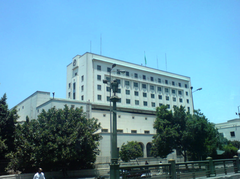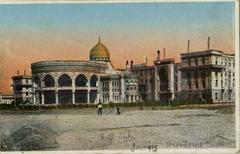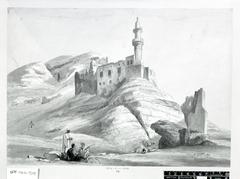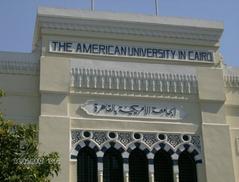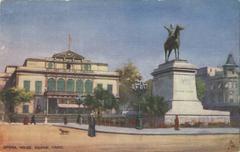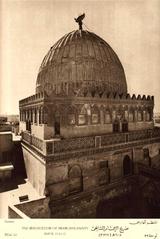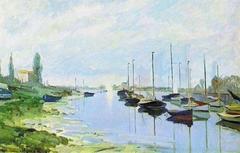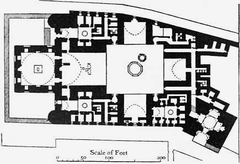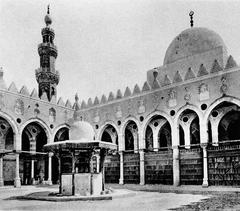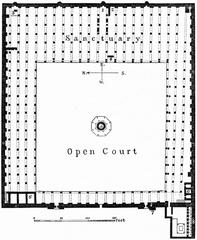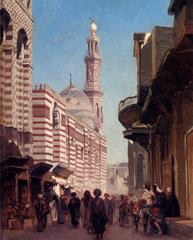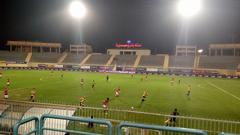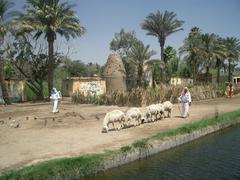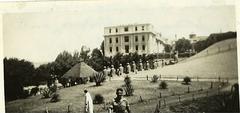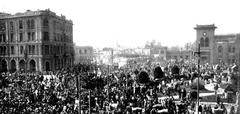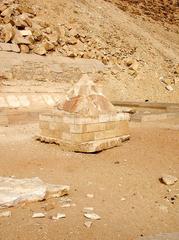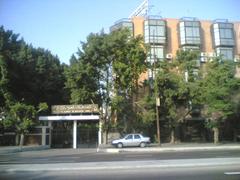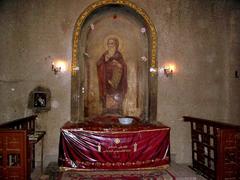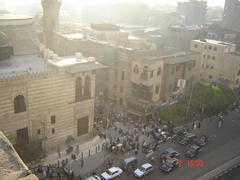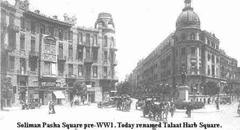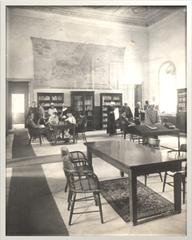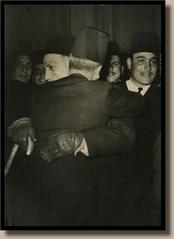
Qasr El-Nil Street Cairo: Visiting Hours, Tickets, and Historical Sites Guide
Date: 03/07/2025
Introduction to Qasr El-Nil Street, Cairo
Qasr El-Nil Street is one of Cairo’s most storied and emblematic thoroughfares, blending remarkable history, architectural diversity, and a vibrant urban energy. Originating in the late 19th century as part of Khedive Isma’il Pasha’s ambitious modernization plan, Qasr El-Nil was designed to transform Cairo into a cosmopolitan capital—a “Paris on the Nile.” Today, the street remains a focal point for Cairo’s cultural life, political events, and commercial activity, connecting Tahrir Square to Gezira Island via its iconic bridge. Its impressive European-influenced architecture, eclectic cultural institutions, and rich political history make it a must-visit for travelers seeking to experience the heart of Egypt’s capital.
This comprehensive guide covers Qasr El-Nil Street’s origins, architectural highlights, key attractions, visiting hours, ticketing information, accessibility, and practical travel tips. Whether you are a history buff, architecture enthusiast, or first-time visitor, this article provides all you need to plan your exploration of one of Cairo’s most significant urban landmarks.
For official details on opening hours and events, consult resources such as the Egyptian Museum Official Website, Happy Irish Wanderers, and CN Traveller ME.
Table of Contents
- Historical Background and Urban Vision
- Architectural Styles and Landmarks
- Key Attractions and Visiting Information
- Cultural Life and Social Significance
- Dining, Shopping, and Nightlife
- Visitor Tips, Accessibility, and Safety
- Getting There and Transportation
- Frequently Asked Questions (FAQ)
- Summary and Recommendations
- References and Further Reading
Historical Background and Urban Vision
Qasr El-Nil Street was conceived during the reign of Khedive Isma’il Pasha in the late 1800s, amid efforts to reshape Cairo into a modern metropolis. French urban planners were commissioned to design wide boulevards, leafy sidewalks, and stately buildings, drawing inspiration from European capitals. The Ismailiya district, with Qasr El-Nil as its main artery, was built atop reclaimed marshland along the Nile’s east bank.
Strict regulations ensured architectural grandeur: only buildings costing a minimum of 2,000 Egyptian pounds were approved, attracting the city’s elite and fostering a flourishing commercial district. The street quickly became synonymous with sophistication, blending Beaux-Arts, Neo-Baroque, Art Deco, and Moorish Revival influences alongside traditional Egyptian and Islamic motifs.
During the British colonial era (1882–1952), Qasr El-Nil’s importance grew further as the site of army barracks and administrative headquarters. With Egyptian independence, the area evolved into a symbol of national pride, witnessing major events such as the 2011 Revolution and ongoing public demonstrations.
Architectural Styles and Landmarks
Qasr El-Nil Bridge
Completed in 1933 and adorned with four monumental bronze lion statues by Henri Alfred Jacquemart, the Qasr El-Nil Bridge is one of Cairo’s most recognizable landmarks. Connecting downtown to Gezira Island and Zamalek, it is a popular spot for walks—especially at sunset, with panoramic Nile views. The bridge is open to pedestrians and vehicles 24/7 and is free to cross. (Wanderlog)
Abdeen Palace
Constructed between 1863 and 1874, Abdeen Palace was designed to serve as the royal residence and government headquarters, replacing Cairo’s medieval citadel. The palace, with over 500 rooms and expansive gardens, now houses several museums: the Silver Museum, Arms Museum, Royal Family Museum, and Presidential Gifts Museum.
- Visiting Hours: Daily, 9:00 AM–4:00 PM.
- Tickets: Approx. 60 EGP for foreigners, with discounts for students and children.
- Accessibility: Partially wheelchair accessible; check in advance for assistance.
Egyptian Museum
Located at the northern end of Qasr El-Nil Street on Tahrir Square, the Egyptian Museum contains over 120,000 ancient artifacts, including the treasures of Tutankhamun and the Royal Mummy Room.
- Visiting Hours: Saturday–Thursday, 9:00 AM–5:00 PM; closed Fridays.
- Tickets: Around 200 EGP for adults, with discounts for students and seniors.
- Purchase: Onsite or online via the official website.
Other Noteworthy Buildings
- Groppi Café: Established in 1909, renowned for its Swiss-inspired pastries and Art Deco interiors.
- Sednaoui Department Store: Early 20th-century architectural landmark.
- Royal Automobile Club: Historic social club.
- Cinema Radio: Art Deco cinema dating to 1948, occasionally hosting cultural events.
Key Attractions and Visiting Information
- Qasr El-Nil Street: Open 24/7; free access.
- Landmark Museums & Palaces: Specific opening hours and ticketing apply (see above).
- Guided Tours: Available from local operators; popular for those seeking historical and architectural context.
- Nearby Attractions: Tahrir Square, Gezira Island, Zamalek, Khan el-Khalili Bazaar (short taxi ride away).
Cultural Life and Social Significance
Qasr El-Nil Street is more than an architectural showcase; it is the heartbeat of downtown Cairo. The street has played a pivotal role in Egypt’s political life, especially during the 2011 Revolution, serving as a gathering point for demonstrations and celebrations. Its proximity to embassies, government offices, and the American University in Cairo ensures a constant flow of students, professionals, and tourists.
Evenings see the area transformed: illuminated bridges, lively cafés, and bustling public squares create a vibrant atmosphere, especially during Ramadan and national holidays. Artistic venues, such as Townhouse and Mashrabia Galleries, and historic cinemas add to the cultural richness.
Dining, Shopping, and Nightlife
Local Cuisine
- Abou Tarek: Famous for koshari, Egypt’s classic street food.
- Zitouni: Upscale Egyptian dining at the Four Seasons Nile Plaza.
- Pier 88: Popular Italian restaurant on the Nile.
- Bab Al Qasr: Levantine cuisine in a luxury setting.
- Groppi Café: Classic pastries and coffee in a historic atmosphere.
(CN Traveller ME, Le Petit Chef)
Shopping
- Bookstores: Lehnert & Landrock (est. 1924) for books, maps, and vintage photos.
- Antique Shops: For collectibles and local crafts.
- Fashion Boutiques: From international brands to Egyptian designers; Omar Effendi is a historic department store.
Nightlife
Outdoor cafés, street vendors, and live music create a lively nighttime environment. The area is renowned for its safe, friendly, and vibrant street life.
Visitor Tips, Accessibility, and Safety
- Best Time to Visit: October–April (15°C–25°C); summers are hot (>35°C).
- Dress Code: Modest dress is appreciated; lightweight, loose clothing is ideal.
- Safety: Generally safe, but remain alert to pickpocketing and scams. Use pedestrian crossings for safety.
- Accessibility: Most major attractions are wheelchair accessible, though some historic sites have limitations. Sidewalks are generally wide but may be uneven.
- Currency: Egyptian Pound (EGP); cash is preferred for small purchases, but credit cards are widely accepted in hotels and large shops.
- Language: Arabic is official; English is commonly spoken in tourist areas.
- Tipping: 10–15% is customary in restaurants.
Getting There and Transportation
- By Metro: Sadat Station (Tahrir Square) serves Lines 1 and 2, with direct access to Qasr El-Nil Street. (Cairo Metro)
- By Taxi/Ride-share: Uber and Careem are reliable; fares from central Cairo range from 30–70 EGP.
- By Foot: The street is walkable from most downtown hotels and attractions.
- By Car: Not recommended due to traffic and limited parking.
Frequently Asked Questions (FAQ)
Q: Is Qasr El-Nil Street open all day?
A: Yes, it is a public street accessible 24/7.
Q: Are there entrance fees?
A: No fee for the street or bridge; museums and palaces charge admission.
Q: Are guided tours available?
A: Yes, many operators offer themed walking tours.
Q: Is the area safe at night?
A: Generally safe, particularly in well-lit and busy areas; exercise standard precautions.
Q: What is the best time to visit?
A: October–April offers the most pleasant weather.
Q: Is the area wheelchair accessible?
A: Most sidewalks and major attractions are accessible, but check ahead for specific needs.
Summary and Recommendations
Qasr El-Nil Street encapsulates Cairo’s complex history, architectural splendor, and vibrant contemporary life. It connects the city’s past and present, from the cosmopolitan ambitions of Khedive Isma’il to its enduring role in Egypt’s political and cultural scene. Visitors can explore grand palaces, iconic bridges, thriving cafés, and bustling public squares, all set against a backdrop of diverse architectural styles and historic events.
For an optimal experience, plan your visit during the cooler months and use public transport to navigate downtown. Download the Audiala app for updated information, guided tours, and event listings. Discover more about Cairo’s historical sites and enjoy a journey through the pulse of Egypt’s capital.
References and Further Reading
- Qasr El-Nil Street - Wikipedia
- Cairo’s Bridges Over Time - Egyptian Streets
- Egyptian Museum Official Website
- Happy Irish Wanderers – Cairo Attractions
- CN Traveller ME – Best Restaurants in Cairo
- Le Petit Chef – Best Restaurants in Cairo
- Cairo Metro
- Weather Spark – Cairo Climate
- XE Currency Exchange
Internal Links:
For more travel tips and event updates, download the Audiala app and follow our social channels. Plan ahead to make the most of your journey through Qasr El-Nil Street and Cairo’s timeless wonders.




